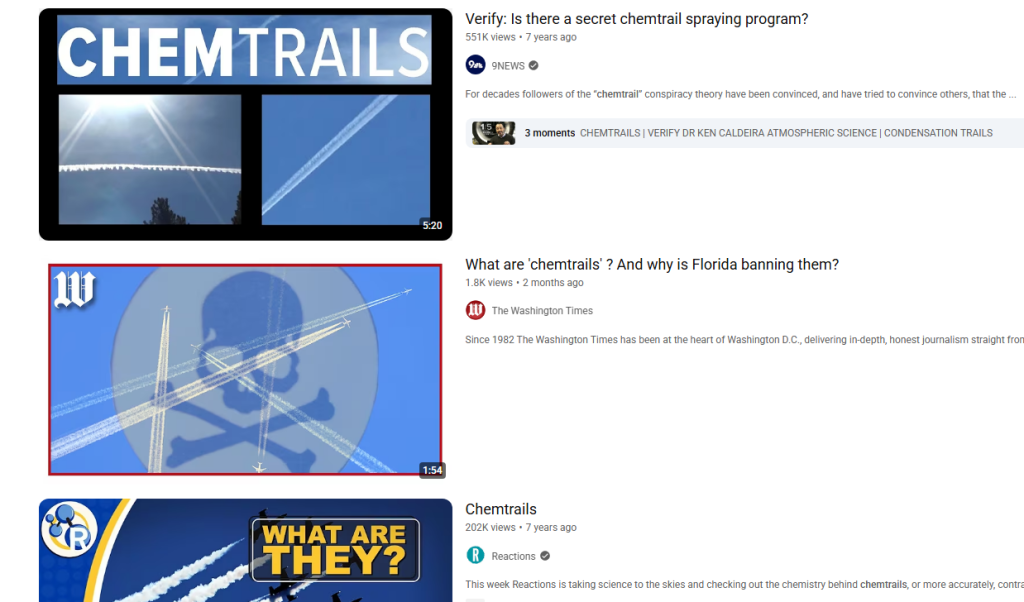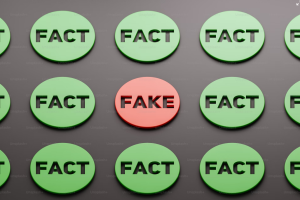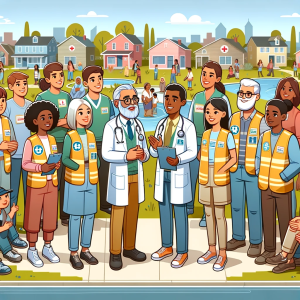
AI Cannot Stop Misinformation Alone
You’re scrolling through your feed. A friend posts a study showing the safety of vaccines. Right below it, another post claims vaccines cause long-term harm, backed by a slick video and emotional testimonials. (I was actually doing this on an HHS post a few days ago)
You click on the study. It’s full of stats, jargon, and complex tables. The video? It’s simple, emotional, and persuasive. Which one are you more likely to remember?
This is the world we live in. A world where facts don’t always win. And while artificial intelligence (AI) is helping make science more accessible, it won’t fix misinformation or disinformation on its own.
Because here’s the truth: knowing something doesn’t mean believing it.
Why Knowledge ≠ Belief
We often assume that showing people a well-researched article will automatically change their minds. But human psychology doesn’t work that way.
When we encounter new information, especially something that challenges our identity, politics, or community, our brains don’t go into “scientific analysis” mode. Instead, they go into defense mode.
This is called motivated reasoning. We filter facts to fit our existing beliefs. And sometimes, when we’re shown evidence that contradicts our views, we double down on the false belief. It’s known as the backfire effect.
It’s not because people are ignorant. It’s because information is emotional, social, and cultural—not just logical.
The AI Hype Trap
With the rise of tools like ChatGPT, there’s growing excitement about how AI might “solve” the misinformation crisis. After all, AI can summarize dense studies, translate science into plain language, and generate eye-catching visuals. Shouldn’t that be enough?
Not quite. This thinking makes two big mistakes:
- It assumes facts alone change minds.
- It treats AI as immune to the same trust issues that plague human messengers.
But the problem isn’t just access to knowledge—it’s what people do with that knowledge, and whether they trust the source.
What AI Can Do (And Do Well)
That’s not to say AI is useless in the fight for truth. Far from it. AI can absolutely help:
- Translate science into summaries that regular people can actually read and understand.
- Break language barriers by offering content in multiple languages.
- Visualize data through charts, videos, and stories that capture attention (though this tech is still developing. I think AI’s infographic-generation capabilities are still pretty poor)
These tools are a major boost for science communication. They help people learn, stay informed, and feel connected to complex topics. But they don’t tackle the emotional or social roots of misinformation.
Why AI-Generated Science Isn’t a Cure-All
Even the clearest, most engaging AI-generated content can fall flat if it hits someone’s identity the wrong way. Here’s why:
- People often reject corrections when they feel like their worldview is under attack.
- Fact-checks don’t reach everyone, and often arrive too late.
- AI summaries may seem less trustworthy than human-written ones, especially when tone and context are off.
Put simply: AI can help share science, but it can’t make people believe it. That takes a different playbook.
What Does Work Against Misinformation
Research in psychology, media studies, and education has identified five proven strategies to help people resist misinformation. These strategies don’t require AI, but they can be supported by it.
Prebunking (Like a Vaccine for the Mind)
Before a lie even reaches someone, you can teach them how lies work. That’s the idea behind prebunking—also known as inoculation theory. Think of it like this: If you know magicians use sleight of hand, you’re less likely to be fooled during the trick.
One example is the Bad News game, which trains people to spot manipulation techniques like emotional language or scapegoating. After just 15 minutes of play, people became significantly more resistant to fake news. It’s been tested across cultures—and it works.
Platforms like Google have used prebunking videos to prepare people for election-season misinformation. The result? Stronger mental defenses against manipulation.
Media Literacy Education
Teaching people to ask “How do I know this is true?” might be the most powerful tool we have.
In schools, short programs that teach students how to verify claims and identify misinformation have been shown to increase civic engagement and reduce belief in fake news. Even adults benefit. Across dozens of studies, media literacy consistently helps people tell fact from fiction. Granted, this is becoming a challenge on all levels of educational governance
The key is making it practical: quick lessons, interactive activities, and real-world examples.
Fact-Checking (Still Useful, But Not a Silver Bullet)
Yes, fact-checking works—on average, it reduces belief in false claims. But it has limits:
- It’s often too slow to catch viral misinformation in time.
- It rarely reaches beyond echo chambers.
- People may dismiss fact-checkers they see as politically biased.
That said, newer approaches like community-based fact-checks are showing promise, reducing the spread of false posts and encouraging deletions. Best practice? Use fact-checking alongside prebunking and media literacy, not instead of them.
Trusted Messengers & Storytelling
People believe people, not platforms. A neighbor, a pastor, a teacher, or a local doctor will be more persuasive than a stranger on TV or even a famous scientist. This is especially true in communities with deep-rooted mistrust of institutions.
The way messages are shared also matters. Facts wrapped in relatable stories—ones that emphasize shared values like protecting kids or helping the community—are far more effective than dry statistics.
Platform Design and Policy
Some solutions need to happen at the system level:
- Slow down the spread of flagged misinformation.
- Increase transparency about how content is flagged or promoted.
- Enforce stronger rules during elections or emergencies (as seen in the EU’s Digital Services Act).
Policy matters. Design matters. And when done right, they can reduce harm at scale.
Wrapping It Up: A Smarter Playbook for the Truth
If we want to fight misinformation, here’s the approach that works:
- Use AI to simplify and share science—but don’t stop there.
- Inoculate people before they see falsehoods.
- Build critical thinking through everyday media literacy.
- Share messages through people and stories we trust.
- Fix the platforms and policies that shape what we see.
AI is a powerful tool. But belief, trust, and behavior come from psychology, education, and relationships.
Final Thought: Truth Needs a Team Effort
AI didn’t create the misinformation crisis, and it won’t end it. But it can be an ally—if we combine it with what science already tells us works.
Misinformation survives not because it’s smart, but because it’s human. It speaks to fears, emotions, and identity. To win against that, we need smart tech anda smarter strategy.
If we get this right, we won’t just make science easier to read—we’ll make society more resilient, informed, and united in the face of falsehood.



